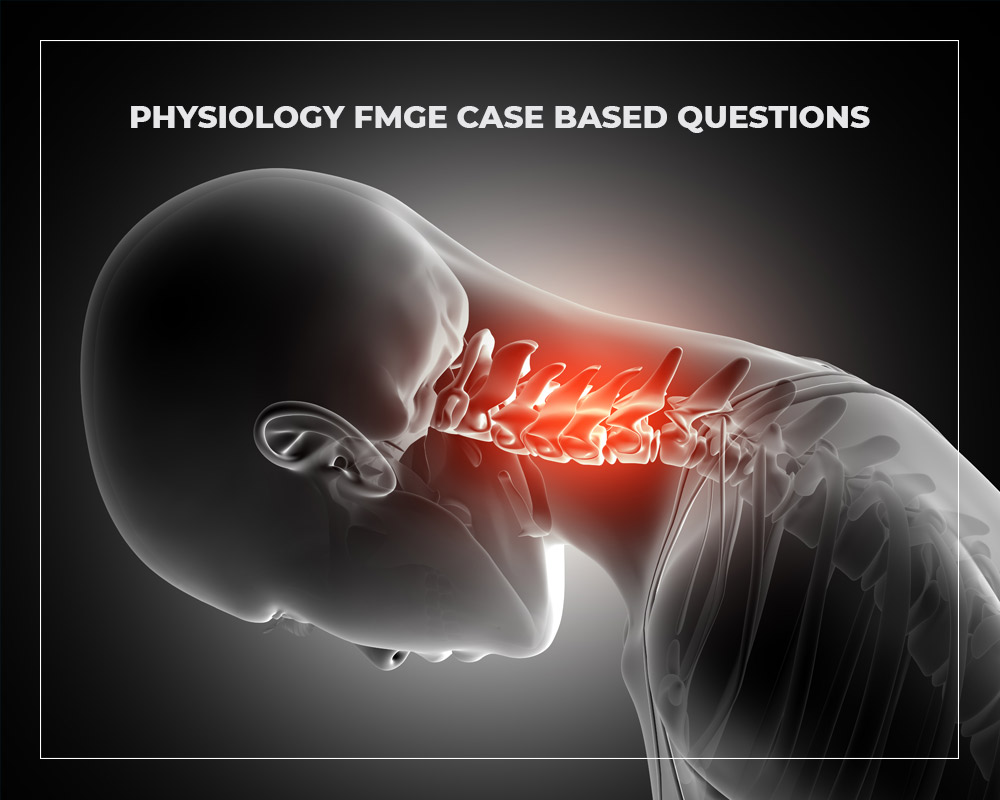Physiology FMGE Case Based Questions
High-dose glucocorticoid therapy for treatment of rheumatoid arthritis remains highly controversial. It is widely agreed that it is highly effective in controlling acute rheumatoid inflammation, but it may also result in significant adverse effects. Complications of high-dose glucocorticoid therapy include which of the following?
Correct!
Wrong!
Using laboratory micropuncture technique, blood plasma is collected from both the afferent arteriole and efferent arteriole of a renal cortical glomerulus. Which of the following has the lowest afferent/efferent arteriole concentration ratio?
Correct!
Wrong!
An adult male becomes hypotensive during surgery because of blood loss. Intravenous administration of 500 ml of which of the following solutions will have the greatest effect in restoring blood volume, and thus blood pressure to normal?
Correct!
Wrong!
A 14-year-old boy presents with weight loss and diarrhea. His tongue becomes sore and blistery after eating oatmeal or rye bread, which leads to the diagnosis of celiac disease. The boy and his parents are advised to be sensitive to symptoms of tetany and paresthesias, since they can occur as a consequence of malabsorption of which of the following?
Correct!
Wrong!
A 71-year-old man was admitted to the hospital after getting very dizzy upon rising from the toilet seat. At that time his pulse was racing and he remembers that his stool looked very different than usual. Over the last 4 or 5 weeks before the incident, the patient self-medicated with high-dose ibuprofen three times a day to control some pain in his hips. What is the mechanism of action for nonsteroidal anti-inflammatory drugs (NSAIDs) to cause gastrointestinal (GI) bleeding?
Correct!
Wrong!
Patients with functional dyspepsia (disturbed indigestion) and prominent nausea frequently experience spurts of excessive acid exposure to the upper duodenum. This results in pancreatic secretion, mainly through the action of which of the following substances?
Correct!
Wrong!
A 55-year-old male diabetic has an accommodative power of the lens of 10 dioptres. His near point is located 5 cm (2 in), his far point 10 cm (3.9 in) in front of the eye. Which of the following statements are correct?
Correct!
Wrong!
A 54-year-old insulin-dependent diabetic notes that her insulin requirements have gone up dramatically in the past year (from 50 U to nearly 200 U of recombinant human insulin) and her blood glucose is still poorly controlled. A possible explanation for the worsening of her diabetes includes which of the following?
Correct!
Wrong!
A 20-year-old woman admits herself to the emergency room with a yellow discoloration of the whites of her eyes. She says that she does not drink and that she has not experienced any changes in her stool. Her liver enzyme profile and direct serum bilirubin levels are normal, while total bilirubin is elevated. What is the most likely cause for her jaundice?
Correct!
Wrong!
Pupil size is an important indicator of brainstem function. Which of the following results in pupillary constriction?
Correct!
Wrong!
Physiology FMGE Case Based Questions


| How to Prepare PSM for FMGE? | How to Prepare Physiology for FMGE? |
 |
 |
Related Tests:

